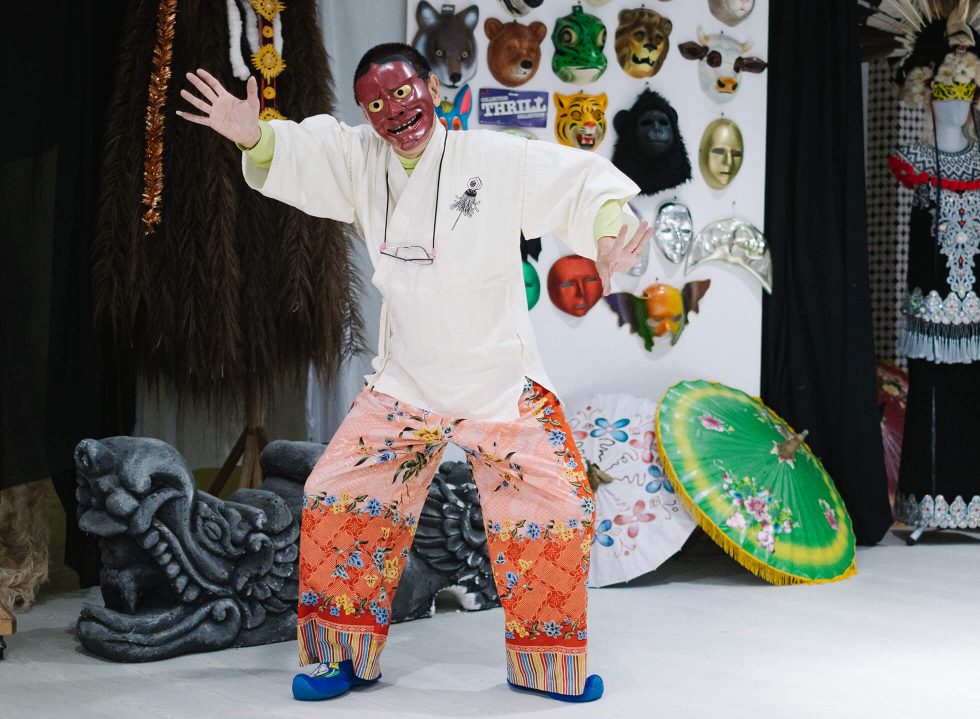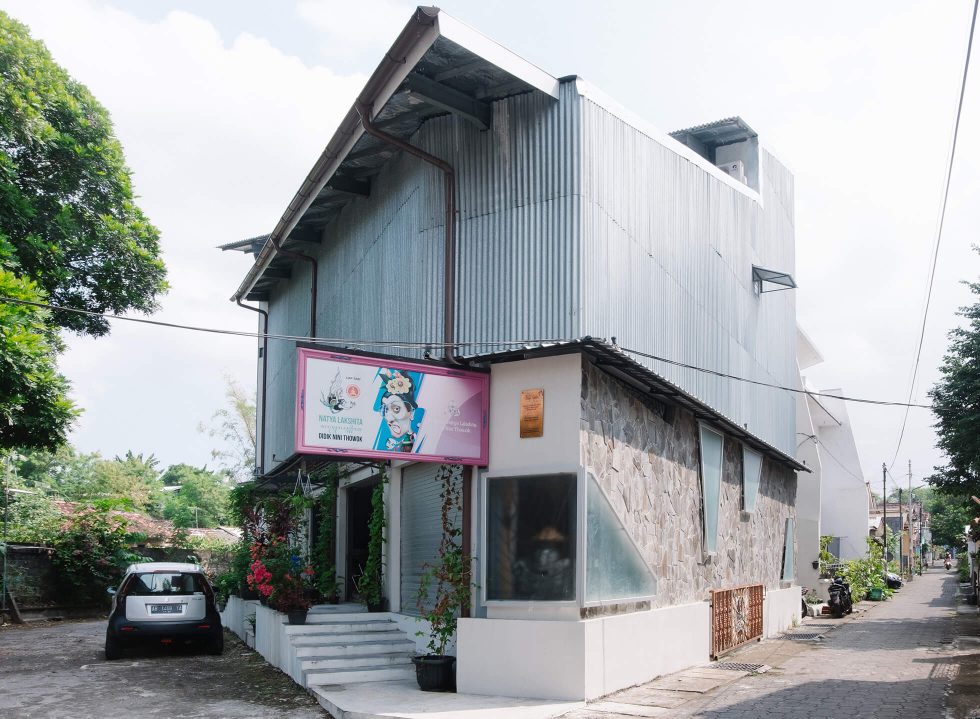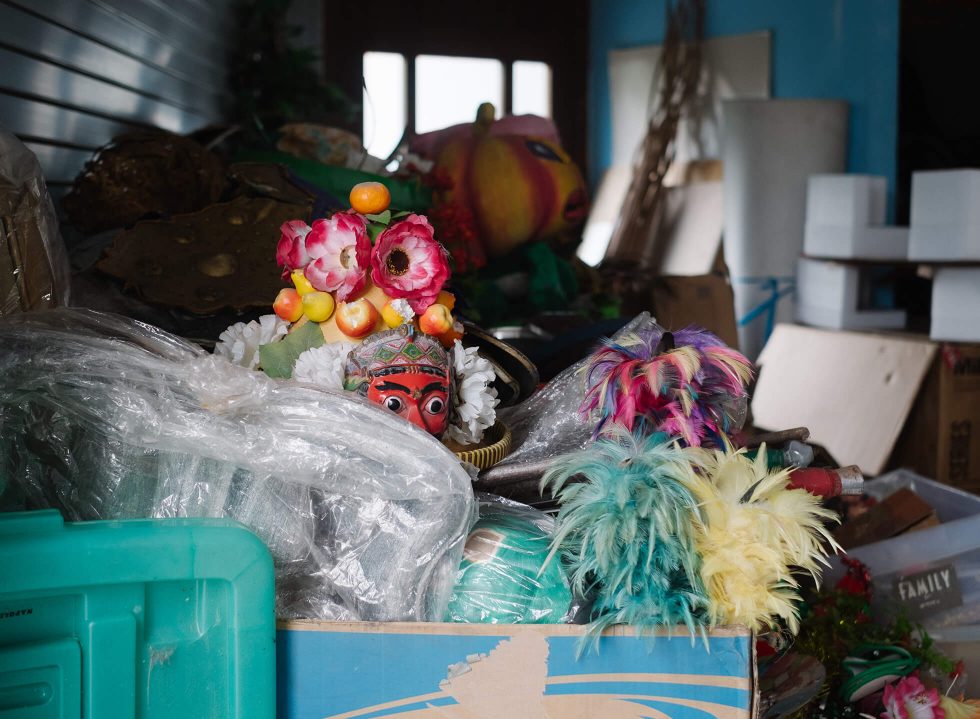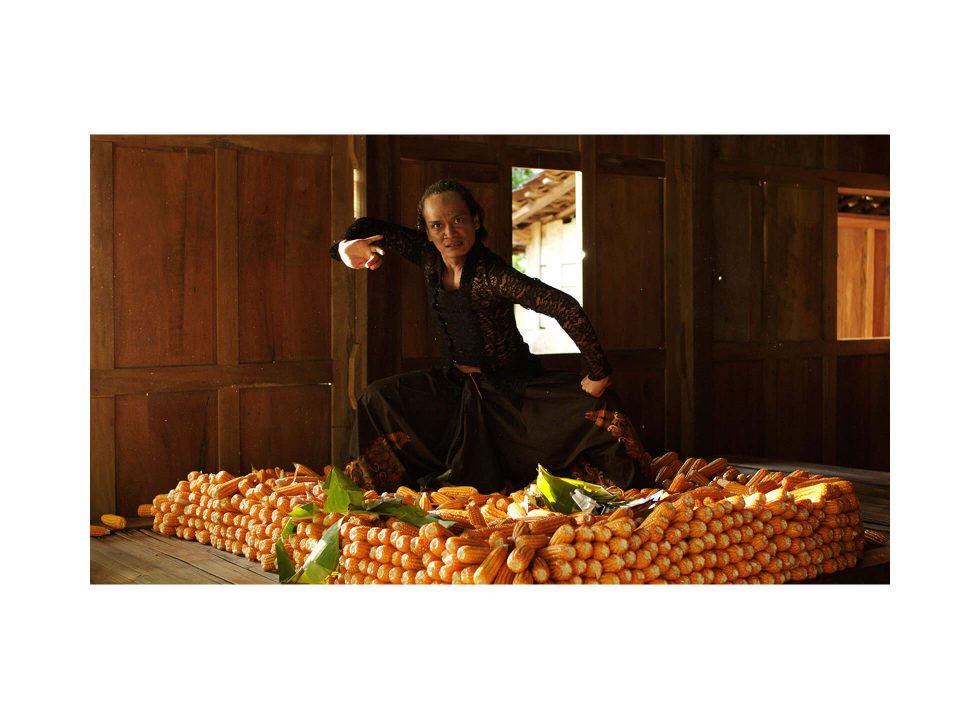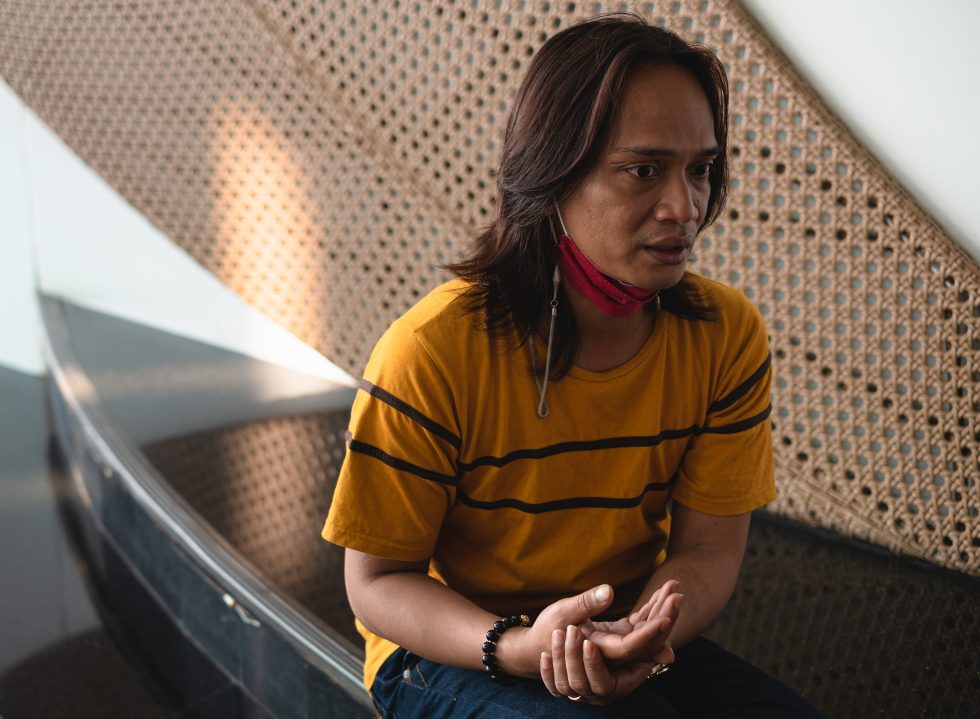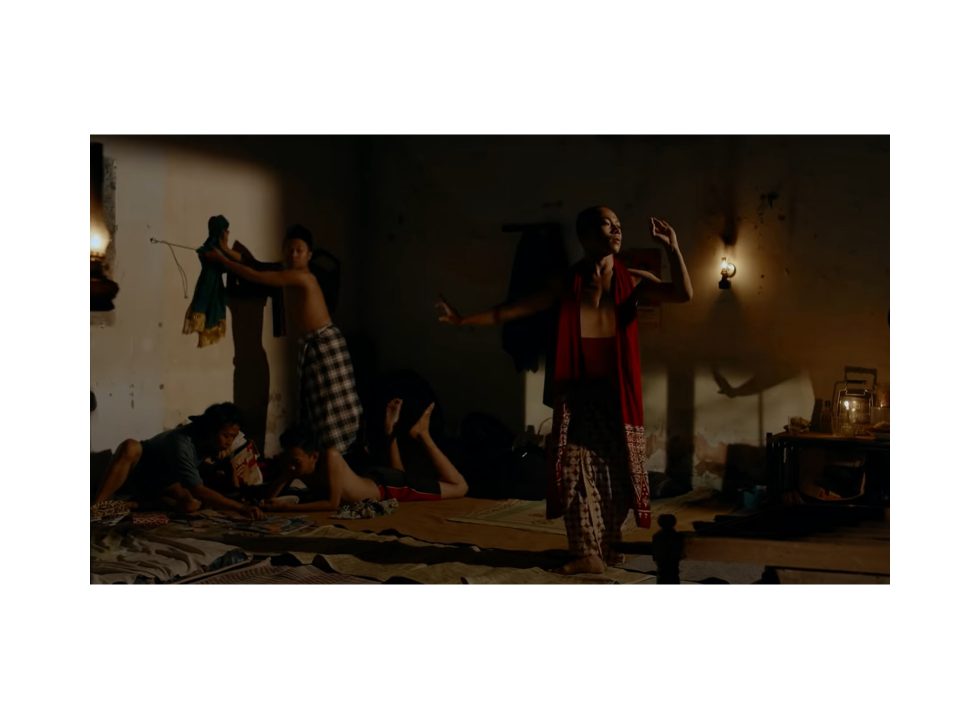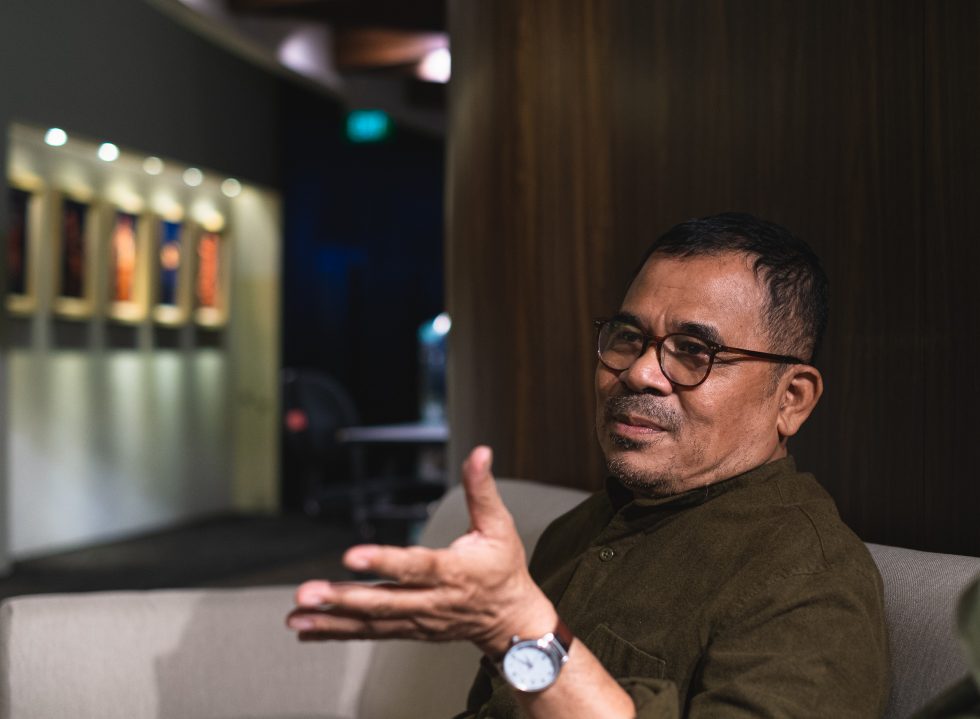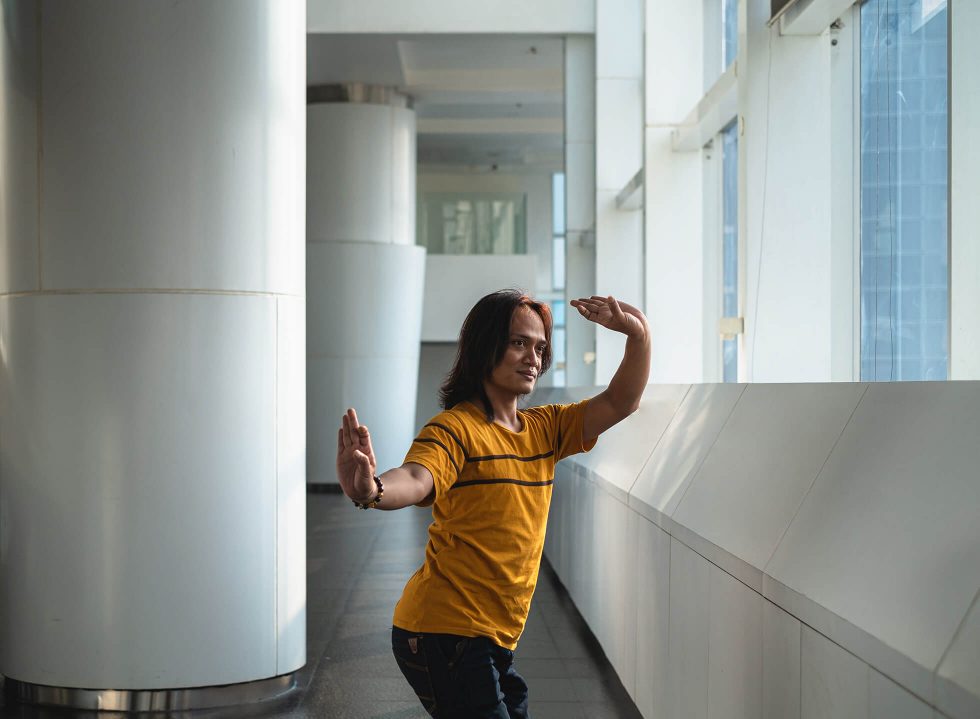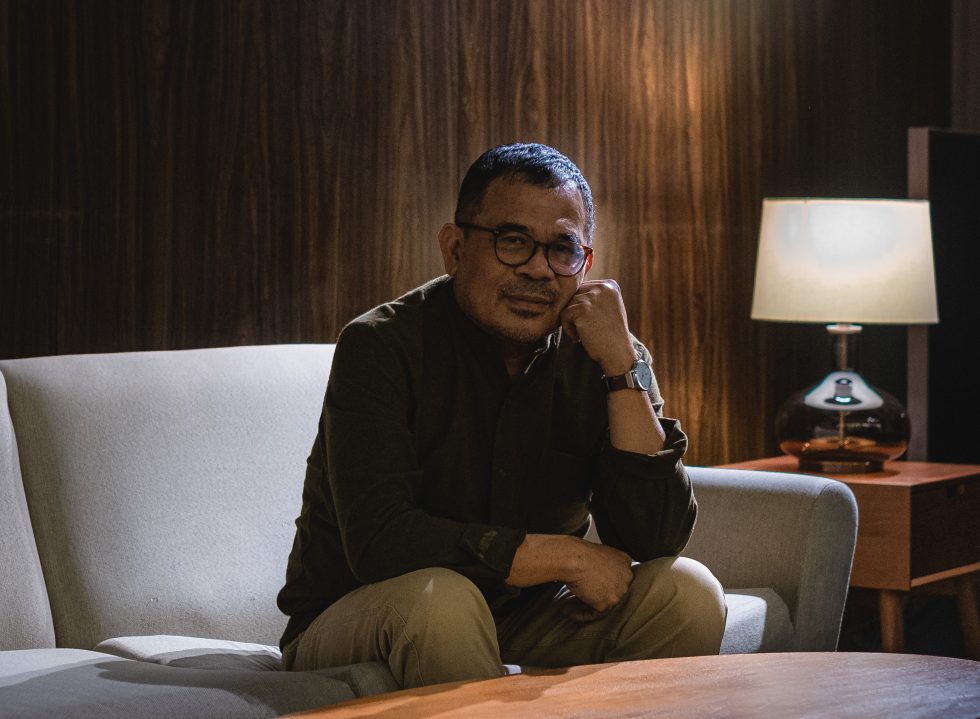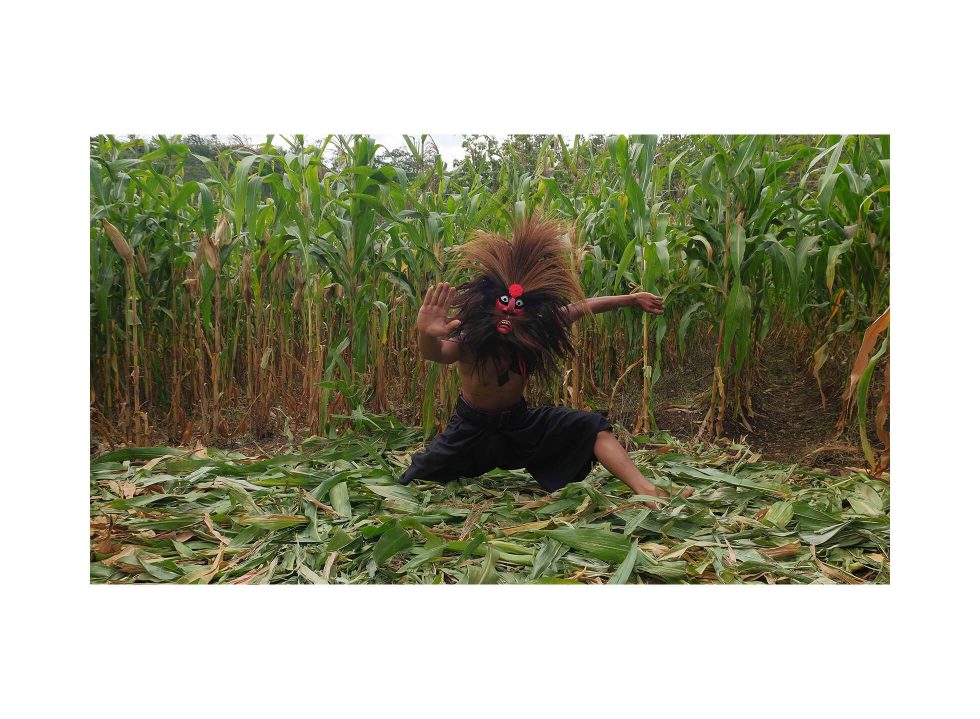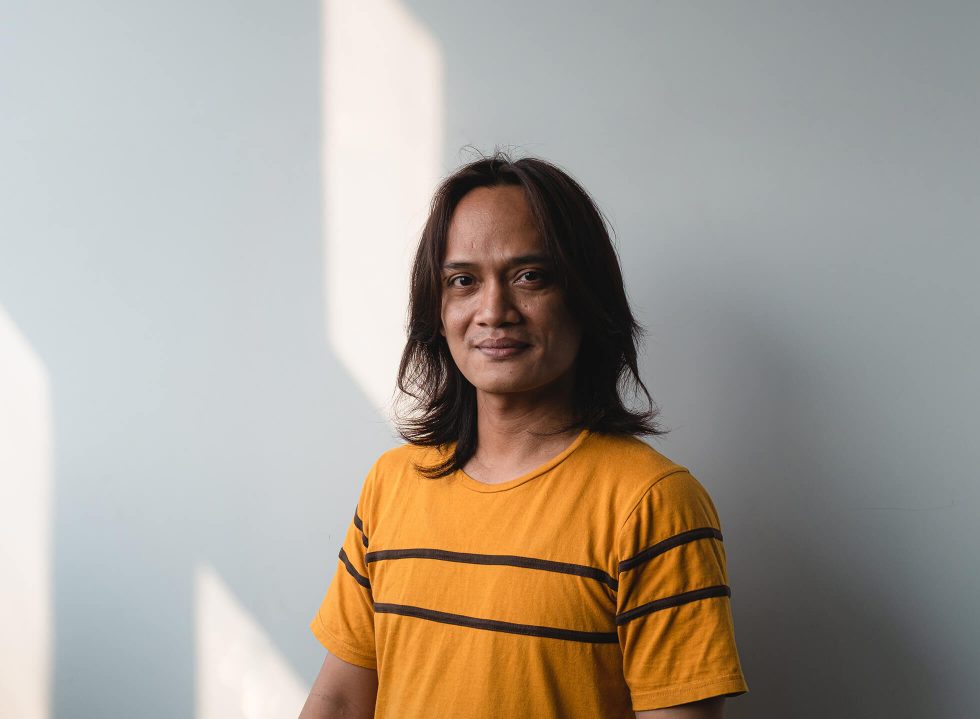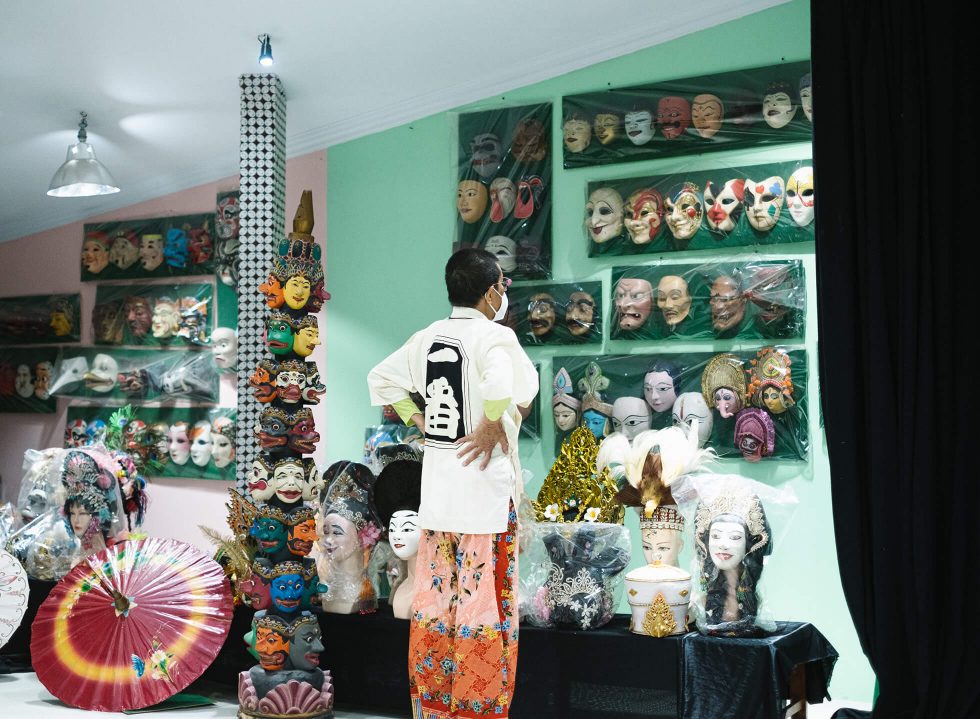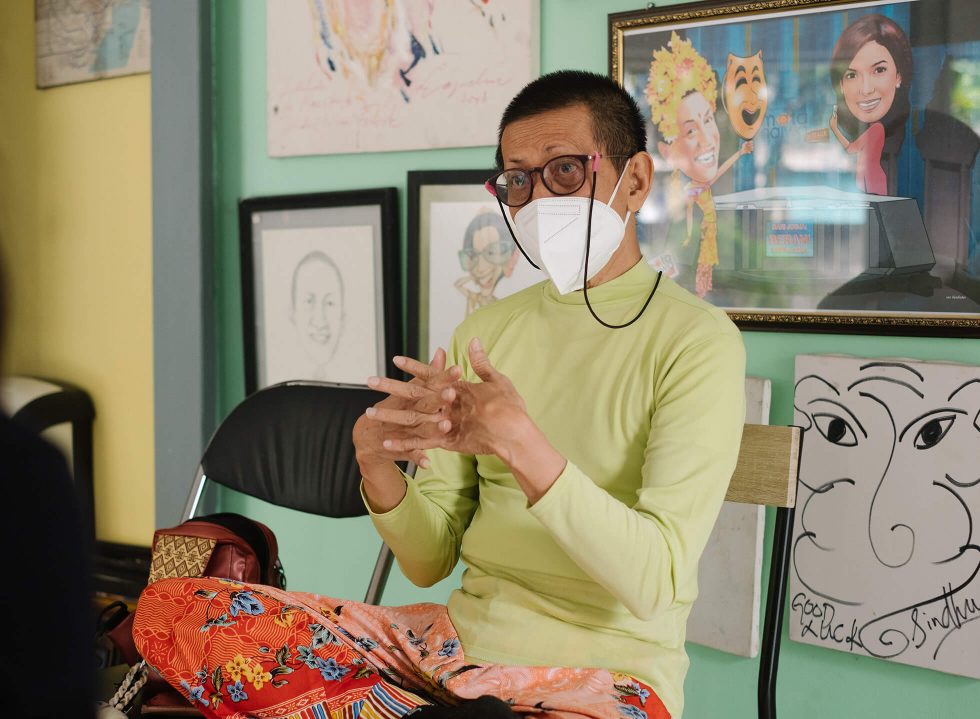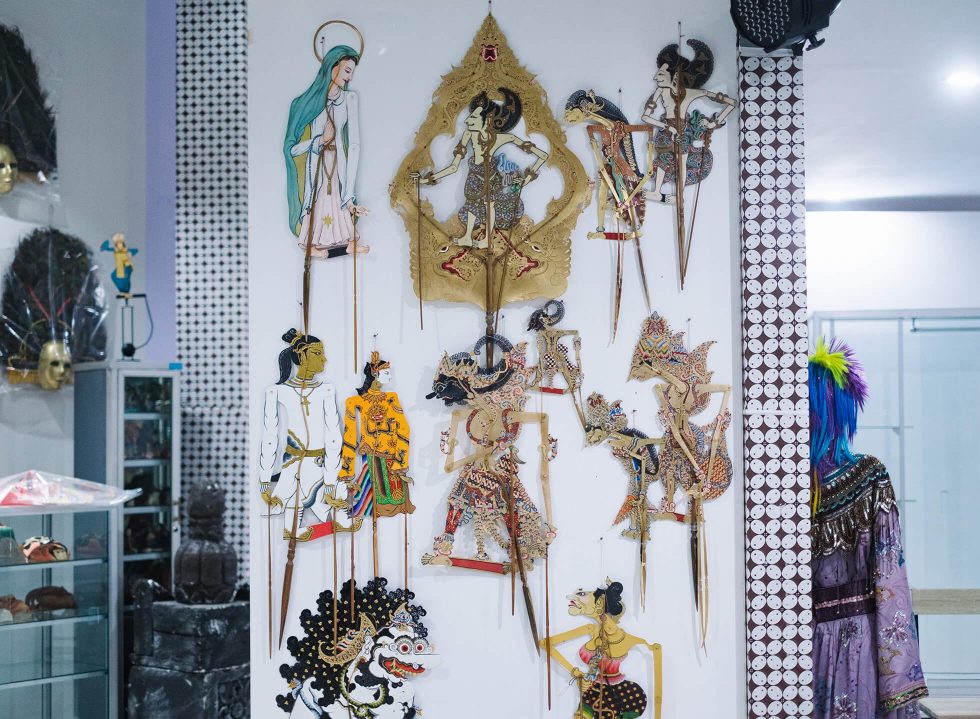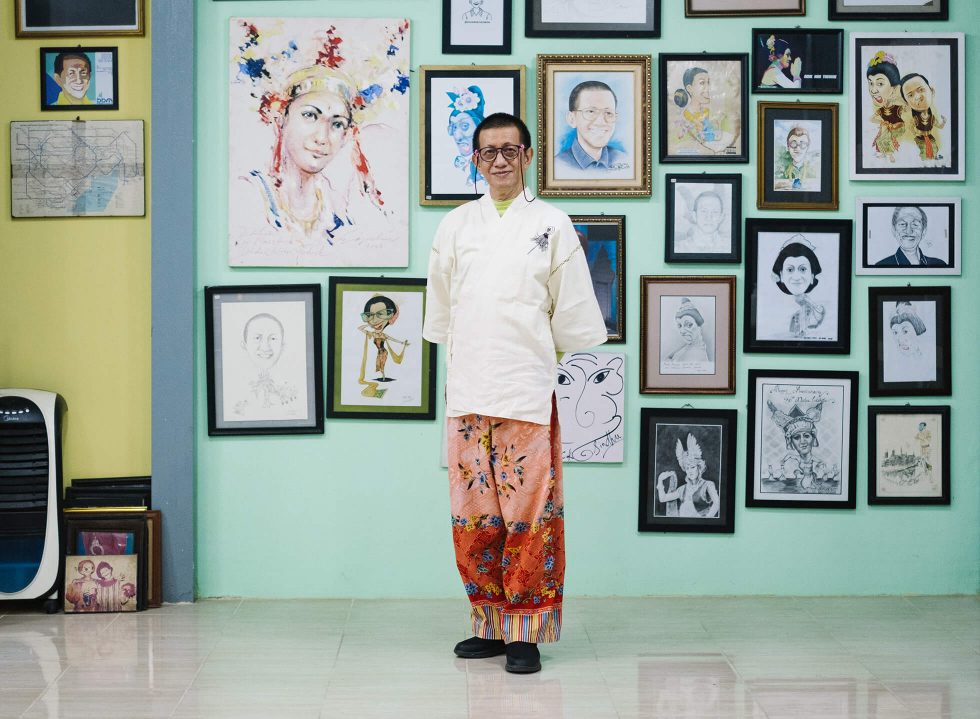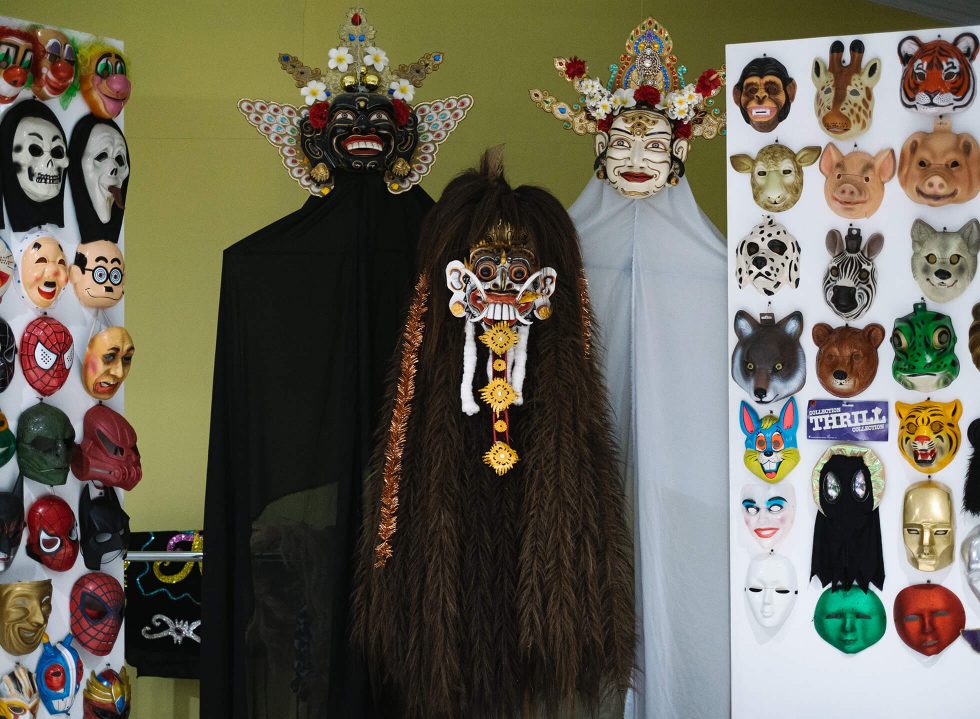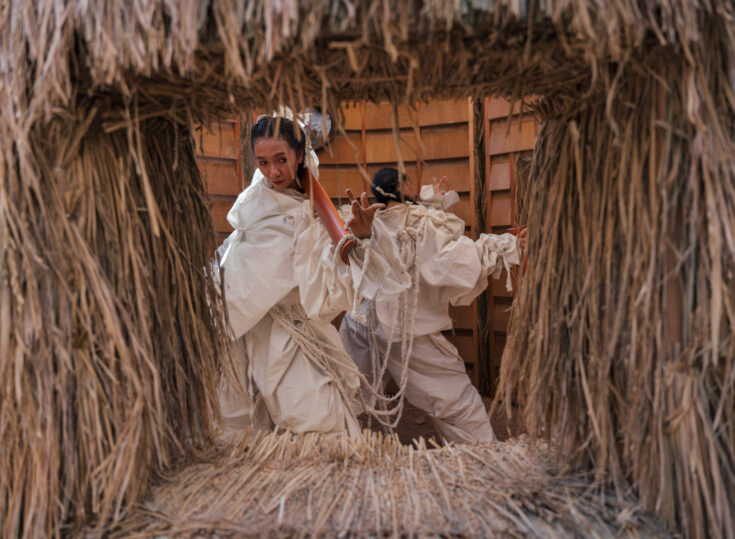In a 2007 feature in The Guardian, American theatre director Peter Sellars wrote about “Indonesia’s Finest” contemporary director, mentioning this filmmaker’s name alongside celebrated directors like Ingmar Bergman and Michelangelo Antonioni who, by their own lights, have redefined cinema. The subject in the discussion was Garin Nugroho, a Yogyakarta-born filmmaker with an impressive body of work that precedes his popularity.
Film critics and enthusiasts around the world regard him as an Indonesian director who stops at nothing to embrace his love for Indonesian arts—and being successful at doing so. Among Garin’s earlier works, ‘Opera Jawa’ (‘Requiem from Java’, 2006) won multiple national and international awards, including Citra Award for Best Adapted Screenplay and Silver Screen Award for Best Asian Feature Film. The sixty-one-year-old considers it (and his other works) as an act of giving back to the culture and tradition, like Wayang Wong and other Javanese dramaturgy (lakon) that shaped him.
While Garin and his works are internationally esteemed, the same cannot be said in Indonesia, a country whose masses thrive on popular or mainstream cinema. But his 2018 work, ‘Kucumbu Tubuh Indahku’ (‘Memories of My Body’) has seemingly shattered this idea. Sweeping eight Citra Awards—and several international recognitions, including the UNESCO Award and Premio Maguey Award—the feature film has similarly elevated his name as much as it pinned a dangerous bull’s eye on him by religious extremists, the country’s conservative pantheon.
The ostensibly controversial ‘Memories of My Body’ story tells the life of Juno (played by actor Aga Khan), a soft-spoken, male cross-gender dancer (Lengger) who turned his personal-political trauma into a driving force to dance. The film, lush with cultural narratives in a village in Central Java, was inspired by the real-life of Lengger dancer Rianto, who made dancing his liberating way of life. In the film, the protagonist had to experience a back-breaking artistic journey stained with violence, sexuality and gender-identity politics, triggering many conservative audiences to label the film as promoting homosexuality and queerness.
It’s a puzzling, nonetheless backward situation that Indonesia is facing. For throughout the history of our traditions, Javanese dances (as portrayed in the film) carry with them a layer of cultural representations that involve crossing the line of two opposing ends: the masculine and feminine, the normal and deviant, the tangible and transcendent. Such as the performative transvestism (cross-gender dancing/dressing) and mysticism true to their roots. For all Garin’s love and effort to revive Indonesian traditions, it was further scrutinised and misunderstood.
Through the ground-breaking film, Garin opens up a path to familiarise his audience with the intersections that these forgotten arts, namely Javanese dance, had to encounter; between the body as a liberated vessel versus labels that categorise it, art as a form of expression versus radicalism that politicises it, and between the buried past and questionable present.
Passing a legacy
“I study traditional arts spiritually and never stop. I used to practice the Bedhoyo’ (Bedhaya) court dance for years and still remember vividly the move to each of its melodies,” said Didik Nini Thowok, a sixty-six-year-old performer who started as a traditional Javanese cross-gender dancer. One of the few left in Indonesia.
It was a rather slow day for the dance maestro or Eyang Didik whose alias is a homage to the “Nini Thowong” dance crafted by his mentor, Bekti Budi Hastuti (then known as Tuti Nini Thowok). In between his answers, he leaned forward to pick up his teacup; moving his fingers and body gracefully as if to the sound of gamelan music, rekindling one’s memory of a silk shawl or kain jarik (traditional Javanese cloth) often wrapped around his hips.
“Indonesian culture has an extended history of crossing barriers; genders, ethnicities, faiths. Yet, we are obsessed with confining things and putting them into boxes. If you learn about these traditions, you will realise that categorisation does not matter,” said the choreographer whose appearance on TVRI Jogja in 1987 landed him the popularity that brought him as far as performing in the State Palace in 1993 and Yale University in 2012.
Full of life at the age of sixty-six, Eyang Didik now spends most of his time supervising his dance studio, Natya Lakshita Dance School (established in 1980) in Yogyakarta and educating the young about the art of traditional dances, including cross-gender performances. While Eyang Didik was not the only male dancer to take pride in embodying the ‘feminine’ and deforming the ‘masculine’ through Javanese dance, his signature of sprinkling a dash of humour into a seemingly sacred repertoire has set him apart from other performing artists of his time.
“When it comes to performative gender-crossing in Javanese dance, we invite the audience to muse on a completely different, inverted kind of reality.” – Didik Ninik Thowok, Traditional Dance Maestro
Among a legion of admirers, a woman who followed his journey since the ’80s through television never thought she would raise a son to carry on this heritage. Her name is Rusti, mother of a Lengger dancer Rianto from the aforementioned film directed by Garin. “My mother watched Mas Didik dance flirtatiously on TV when I was still in her tummy, and she would pray that one day, her child would become a dancer too. Since I was a kid, I would dance to the radio and do this.” He curled his fingers to form a delicate hand gesture integral to every Javanese dance, his gaze following his hands.
Like Eyang Didik, the Banyumas-born choreographer didn’t come from a long line of artists, but his mother never missed a dance show in the village, including Lengger Banyumasan (a Javanese abbreviation for “Leng”, meaning “hole”; the female genital, and “Ger” as in “Jengger”; a rooster’s comb that symbolises masculinity.)
In some and often isolated parts of Java, performance art is close to the heart of Javanese villagers and is part of the “village cleansing” ritual, a practice that bids for protection. In 2011, film director Ifa Isfansyah narrates the sacred role of a Ronggeng dancer (a female equivalent of a Lengger) in Central Java and how its people rely on the dancer to relieve their impoverished village, against the backdrop of the 30th September massacre through “Sang Penari” (“The Dancer”), an adaptation of the literature “Ronggeng Dukuh Paruk” (1982) by Ahmad Tohari. But the first time Javanese ethnic rituals made it to the big screen was in 1979, where Jathilan (also known as the horse dance Kuda Lumping) took centre stage in the historical war film “November 1828” by Teguh Karya.
It introduced Java’s collective spiritualism as a manifestation of power and camaraderie to the world.
Java’s nonconformist traditions
“My body takes me to places,” said Rianto, accentuating the word body whenever it emerges. The words “indang” (the external spirit) and “sukmo” (the soul) lightly rolled from his tongue when he explained the transcendental experience of dancing. Then, he recalled the day his family watched him perform as a Lengger for the first time.
“My mother said I was so beautiful, Roro Kidul would be envious,” the latter is a Javanese mythical goddess, “I took it as her first expression of support, and decided that this is something that I want to do for the rest of my life.”
His fellow male friends, austere to the idea of male dancing in woman’s clothes, eventually called him ‘Anto banci’ (sissy). His family became his towering strength amid the humiliations he experienced around his peers, and it was this time that he had to encounter an internal conflict: both of trauma and desire for dancing, which he expressed on stage through his conception of ‘ketubuhan.’
“I identify my body as a library, an archive of emotions and ideas which we cannot name. My body has recorded trauma and happiness, and ‘ketubuhan’ means welcoming and embracing both. The grief and joy, the masculine and feminine, the past and present,” explained Rianto, who danced in Capitol Hill on the eve of Barack Obama’s presidential inauguration in 2009.
In harmony with the Javanese reflective method in their performances, the philosophy of ‘ketubuhan’ also liberates the self from constrictive social norms by defying gender limitations. Sylvia Tiwon, an Associate Professor of Southeast Asian Studies at the University of California, wrote about a deeper reality that can only be attained when these boundaries are violated. In her essay Crossing the Line: Cross-Gender Acts as Contemplation (2015), it reads: “In performative ritual traditions, gender-crossings are especially frequent. [The approach] is of particular significance because of the extreme contrasts it asks us to contemplate.”
On the process of inversion within Javanese arts, Sylvia quoted the folktale of Rama and Sita (Ramayana): “A divine light smiles, glowing on the two faces of the two beings. And thus, male and female cease to exist. The two have become one in a true union. That is, divine love,” to illustrate a true act of love, a finish line that challenges the man to understand the woman in him, and the woman to understand the man in her; a method of tearing down barriers which Rianto explores in his discipline.
Garin, who first met Rianto during the dancer’s collaborative performance “Soft Machine” in Taman Ismail Marzuki, was captivated by the gender-bending narrative he routinely exhibits. But more than that, Garin grew interested in his lens of seeing things and his ability to story-tell a turbulent past and hopeful future. “I believe ‘Memories of My Body’ can serve as an entrance into discovering Indonesia’s forgotten literature that revolves around this nature,” said Garin, later referring to Serat Centhini, a classic Javanese literature known for challenging sexuality as a taboo.
“Indonesian culture has an extended history of crossing barriers; genders, ethnicities, faiths. Yet, we are obsessed with confining things and putting them into boxes.” – Didik Ninik Thowok, Traditional Dance Maestro
As first-hand learners and successors of transvestism in Javanese dances, Rianto and Eyang Didik were quick to share their knowledge of this heritage. The topic swiftly transported Rianto back home to Banyumas, where the Lengger Banyumasan dance is “a necessity to maintain equilibrium, something we recall as ‘kesuburan’ (fertility).”
Lengger itself had undergone many changes according to the socio-political climate that shaped it. Originally, it was men who performed the ritual due to the physically demanding routine, but things shifted with Dutch colonialism in place. What was once a ritual central to the villagers became an entertainment to the eyes of outsiders, who pleaded that women were naturally more attractive for the role. “When this is perceived solely as entertainment, we know that the colonisation of the body has taken place. This is what I’d call body politics,” Rianto enunciated.
Eyang Didik, who has lived long enough to witness how classical Javanese dances have gone to great lengths in regulating new forms, underlined a moment in history where female performers became tyrannies of multiple “isms” (of sexism, colonialism, objectivism) which eventually corrupted this culture, and derogated Javanese dance to the likeness of prostitution.
“Infamous for its eroticism, the performance often led to sexual coercion by Dutchmen, who took up most of the audience. Unable to escape this vulnerable environment, some gave in to this exploitation for money or higher status,” explained Eyang Didik, who himself is celebrated for his female impersonation in Golek Lambangsari, a performance that portrays a gender-bending, coming-of-age chronicle.
Javanese performative rituals also consist of sacred, convoluted affairs alien to the unfamiliar. A case in point is the centuries-old tradition of Warok-Gemblak in East Java’s Reog Ponorogo dance. In this social contract, a Warok (troupe leader) selects his Gemblak (disciple), a young Lengger dancer (often selected for his feminine decorum in dancing) as his mentee. Often, this contract would evolve into a passionate courtship that flourishes even outside the stage, as depicted in ‘Memories of My Body’.
Eyang Didik recounted how this practice was once a norm in Javanese villages. In the olden tradition, presenting a son to a Warok was common for Javanese parents who sought it as an agreeable trade for a higher social rank and blessed life. Today, a restrictive, ethnocentric policy has modified the Reog Ponorogo dance to tone down its ‘subversive’ nature, thus the story of Warok-Gemblakan remains a far-flung concept—a history in exile—concealed to the point of annihilation.
“There are a lot of interesting truths behind this muted tradition. These days, even discussing it might be tantamount to picking a fight,” Eyang Didik laughed.
Commemorating Indonesian arts through cinema
However controversial it may be, the fate of these controversial traditions is a manifestation of a familiar pattern that favours the act of undigested fear rather than impartial evaluation. It’s in our nature to pick as if by design, the “right” from “wrong” according to the social constructs we were fed to believe.
As a filmmaker with great reverence for heritage, Garin emphasises that art and traditions are not to be dictated, but contemplated: “Art is considered to have little role in politics. But if the public space, such as the gallery, is cultivated, it can bring people to get to know their smallest feelings; of nature, objects, colours, humanity. These feelings should be the basis of education. Through them, we can understand art in its relation to history. [Society] tends to see art from a political view. In the end, what emerges is only popular or propaganda art,” expressed the auteur who referred to his works as “heritage cinema.”
Therefore, it comes as no surprise that artists like Garin, Rianto and Eyang Didik experienced their fair share of hurdles in articulating their crafts, all of which are equally ironic and excruciating beyond description. But it’s in Garin’s nature to narrate the unexplainable, and “Memories of My Body” along with his other works flow like a memoir that hints to Indonesia’s rich traditions that were often scarred, violated or tyrannised into extinction.
Through the character Juno and a social setting stained with violence and manipulation, Garin illustrates the social contrasts that deter our culture, transgressive or otherwise, from being appreciated. An irony too true to this topic, ‘Memories of My Body’ was quick to become a subject of hate and punitive religious extremism which resulted in the film’s banning in some parts of the country and death threats to Garin, while the art and the artists opened up intellectual discussions and gained applause in other parts of the world.
It’s a puzzling, nonetheless backward situation that Indonesia is facing.
Rianto, who has witnessed how Lengger Banyumasan once shied away from the public due to accusations of being associated with the Indonesian Communist Party, pointed out the hypocrisy of actively preserving a tradition only after someone else claims it theirs, rather than committing to nurturing. The rising choreographer has settled in Japan, where, according to him, Lengger is gaining a following for its unique, somewhat seductive gestures and introspective values.
So how far and long have arts intersected with politics in Indonesia, and why did Javanese performative rituals get battered down the most? The questions reminded Eyang Didik of why he fell in love with the traditional dance, together with its extended history of spiritualism, in the first place.
“When it comes to performative gender-crossing in Javanese dance, we invite the audience to muse on a completely different, inverted kind of reality. One that separates and disorients us from things that are considered socially acceptable. It encourages you to question, ‘What and who are we, when freed from all these boxes?’”
After all, Eyang Didik embarked on his artistic venture when the nation’s political climate was going through one of the most horrifying and oppressive moments in history, and being a Chinese-Indonesian cross-dressing performer—what he called as ‘double minority’—at this point in life has made him a genuine, radical artist in his own right. Questions on politics strike him as both an engaging and boring topic.
Hence, this also concluded the reason why Garin created ‘Memories of My Body’, for behind all the misconceptions and prejudices, lies a profound understanding that has been passed down for generations: a concept of weaving together contradictions to confront the audience with a void through an artwork.
Cinema and dance is merely one medium of artistic expression among many. Similarly, Javanese culture is a surface scratch to the depths and wealth of Indonesian heritage cultures and traditions, many of which face a dire threat, if not graver, of extinction by neglect. In the Guardian feature by Peter Sellars, the critic-slash-enthusiast argued that the future of film lies in Java, but when the art is misunderstood without any room to thrive, such a statement could amount to nothing fruitful for the future of local film and culture.
